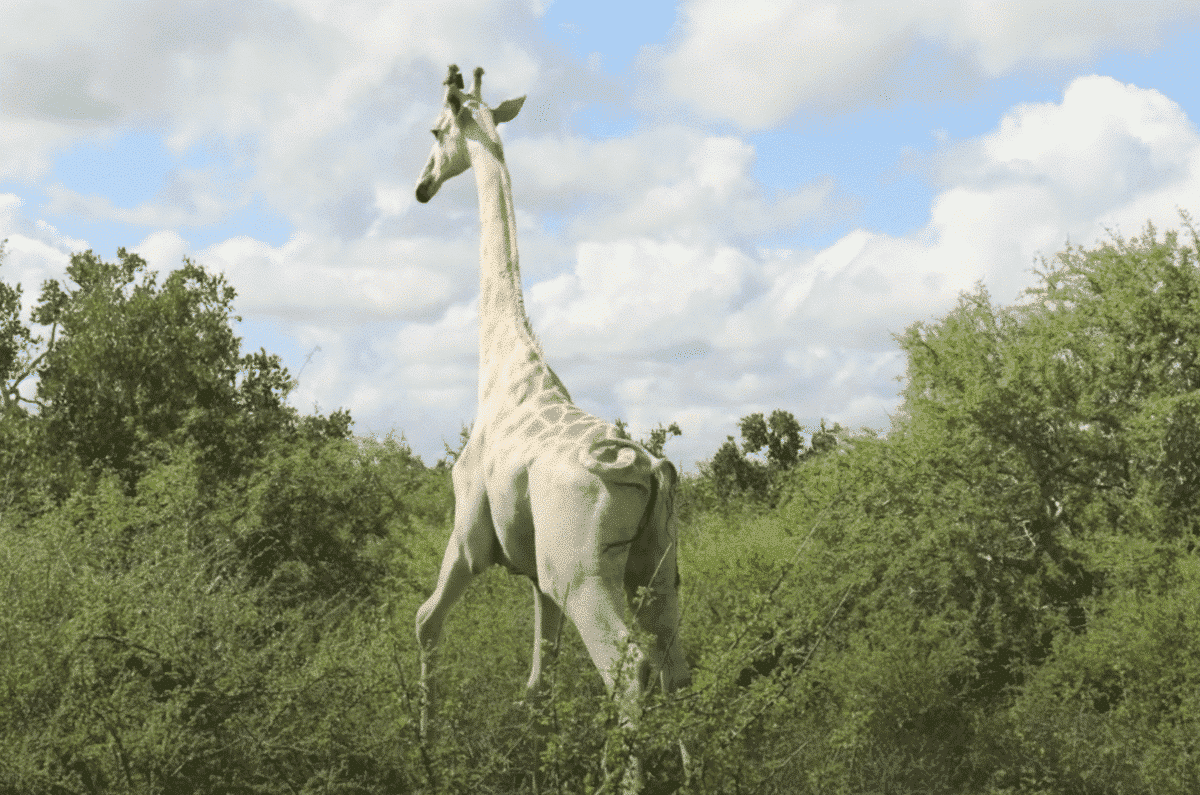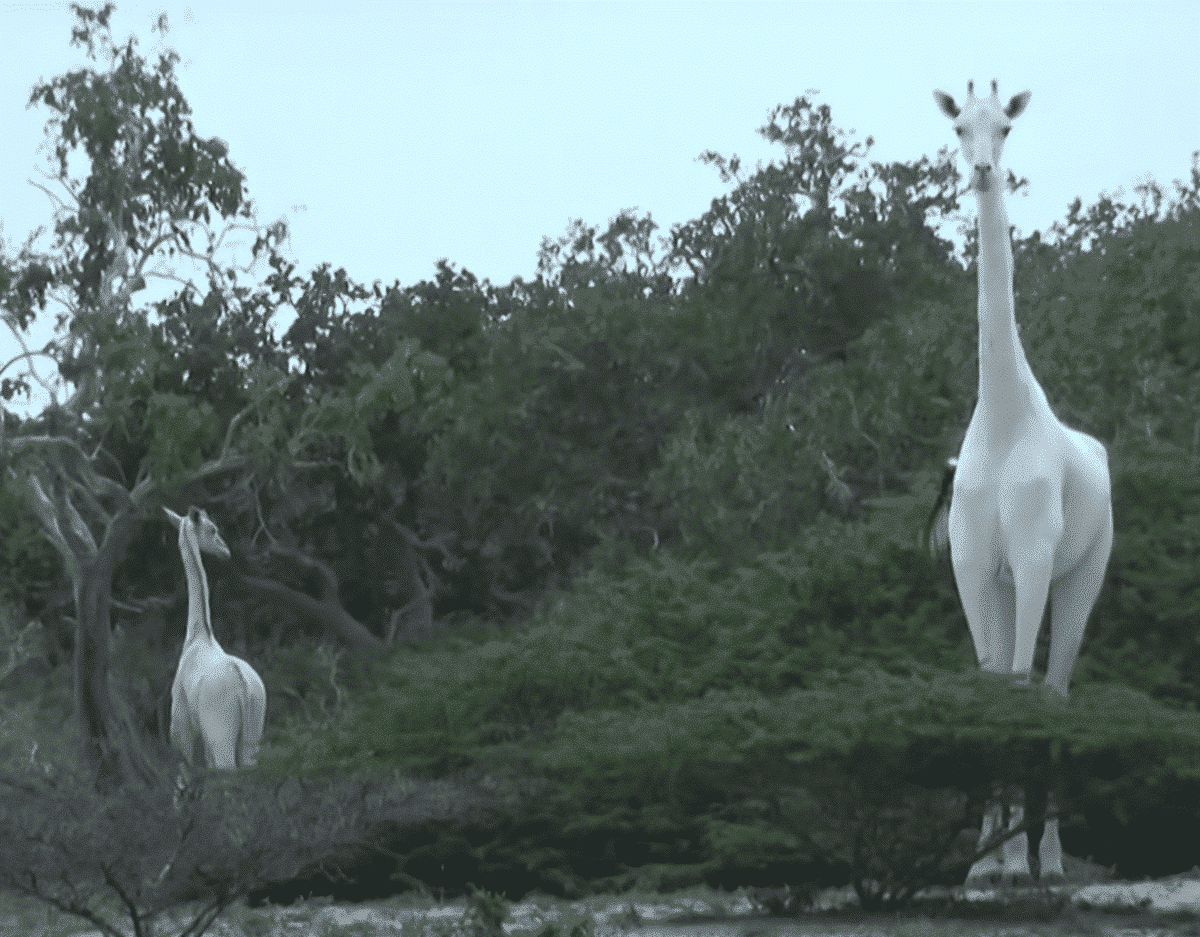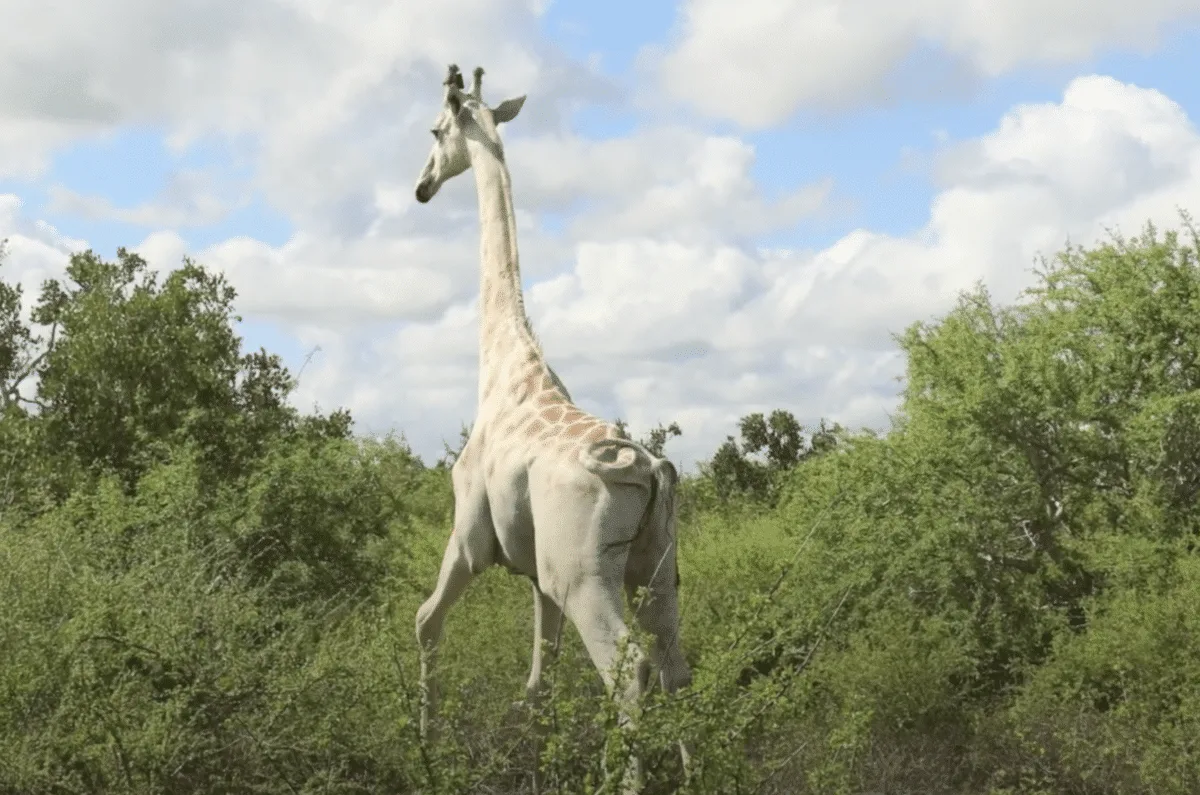The world’s last white giraffe was fitted with a GPS tracker to protect him from poaching.

This measure was taken after the giraffe’s mother and seven-month-old sibling fell victim to poachers in the Ishaqbini Hirola Community Conservancy, located in Kenya’s north-eastern Garissa County. Despite the dire circumstances, hope has emerged in cutting-edge technology – a GPS tracking device, fixed to one of the giraffe’s horns, allowing real-time monitoring to combat poaching.
Leucism – A Rare Genetic Condition
The condition that gives this giraffe its striking white coat is a rare genetic condition called leucism. This condition prevents melanin and other pigments from being released into skin, hair or feathers. As with any rare animal, the giraffe’s white features render him a valuable prize for poachers, who have already claimed the lives of his mother and sibling who also shared the same genetic condition. Being the last of his kind, it is possible but highly unlikely that the condition will pass onto potential offspring.
Protecting The Last White Giraffe
Later that same year, the Ishaqbini Hirola Community Conservancy, where the rare giraffe calls home, made a decision to counter this ever-present threat of poaching. They equipped the giraffe with a GPS tracking device that provides hourly updates on its location, allowing anti-poaching rangers to ensure his safety by swiftly responding to any potential dangers.
The collaborative efforts of conservation groups, including the Kenya Wildlife Service, the Northern Rangelands Trust, and Save Giraffes Now, showcase the dedication to protecting not only the white giraffe but also other endangered wildlife in the region. The GPS tracker demonstrates how technological innovation can be used to protect wildlife and the natural world.
The Uniqueness of White Giraffes

White giraffes first captured the world’s attention in March 2016, emerging in Kenya just two months after a similar sighting in Tanzania. The following year, the mother and her two calves, all with distinctive white fur, made headlines, emphasizing the rarity of these creatures. Native to over 15 African countries, giraffes generally face severe threats from poaching, habitat loss, and human conflict.
Giraffes As Endangered Species
The urgency to protect these gentle giants extends beyond the unique white giraffe. Giraffes, the world’s tallest mammals, have experienced a staggering 40% population decline in the last 30 years. The Africa Wildlife Foundation attributes this decline to poaching and wildlife trafficking, leading to giraffes being designated as endangered on The International Union for Conservation of Nature’s (IUCN) Red List.
Conclusion
The implementation of the GPS tracking device marks a pivotal moment in the ongoing battle to save not only the last white giraffe but also the broader giraffe population. The technologically-aided conservation efforts in Kenya must be applauded as they promise a brighter future for animals such as the last white giraffe. This story highlights the constant battle against poaching and the importance of protecting wild animals.
What do you think about the last white giraffe? Leave a comment below.
Thank you for following along with this article – The World’s Last White Giraffe
You may also like:
- Giraffe Confused When Celebrated with Happy Birthday Song
- The Incredible Discovery of a Second Spotless Giraffe Amazes Scientists
- Birth of the World’s Only Spotless Giraffe at US Zoo
Join our Forum for free today!

- Shocking Survey Results of only 718 Snow Leopards Identified in India - July 18, 2024
- Do Octopuses Punch Fish For No Reason? - July 5, 2024
- Brave Farm Animals Save Chicken Friend FromHawk - June 30, 2024

